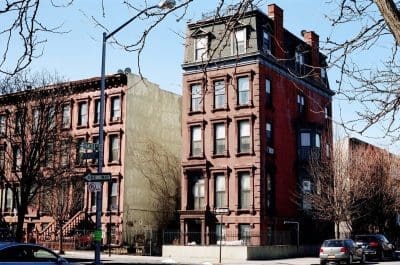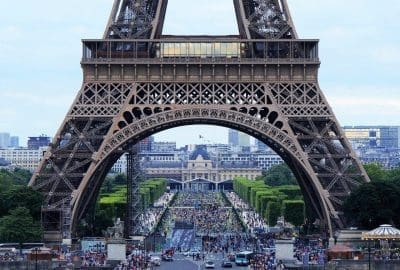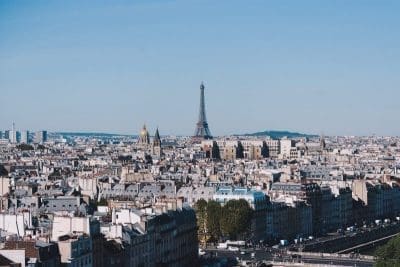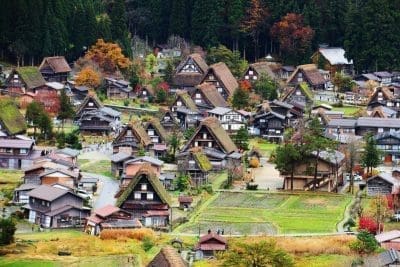In North America’s top 10 largest cities, there exists a stark contrast between the wealthiest and poorest neighborhoods. While some areas boast luxurious mansions, high-end restaurants, and designer shops, others struggle with poverty, crime, and lack of basic necessities. This divide highlights the unfortunate reality of income inequality in these major urban centers. As the population continues to grow and expand, it is important to address the root causes of this disparity and work towards creating more equitable communities for all. Through government initiatives, grassroots activism, and nonprofit organizations, there is hope that these cities can become more inclusive and accessible to everyone, regardless of their socioeconomic status. This article will explore the contrast between the wealthiest and poorest neighborhoods in the top 10 largest cities in North America.
Mexico City
Population: 9.2 Million
Per Capita GDP: $10,000
The wealthiest neighborhood in Mexico City is Polanco, located in the upscale area of Miguel Hidalgo. This area is known for its luxurious homes, high-end shopping, and gourmet restaurants. With a median household income of over $90,000, Polanco residents enjoy some of the highest standards of living in the city.
On the other hand, the poorest neighborhood in Mexico City is Nezahualcoyotl, located on the outskirts of the city. This area struggles with high levels of poverty, crime, and unemployment. With a median household income of just over $5,000, Nezahualcoyotl residents face significant economic challenges and often lack access to basic resources like quality housing, healthcare, and education.
Despite these challenges, communities in Nezahualcoyotl have come together to create their own systems of support and development. For example, the Nezahualcóyotl Initiative is a grassroots organization that works to empower residents and foster social and economic development in the neighborhood.
Overall, the wealth divide in Mexico City is stark, with significant disparities between the richest and poorest areas of the city. However, there are also signs of hope and progress as communities work towards addressing these inequalities and building a more equitable city for all.
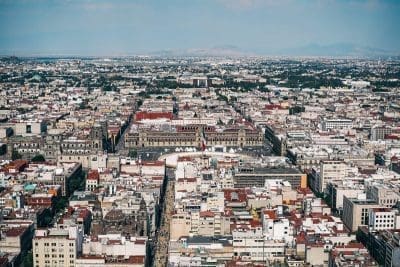
New York City
Population: 8.4 Million
Per Capita GDP: $74,000
New York City is composed of a variety of neighborhoods between its five boroughs that vary widely in terms of economic status. The wealthiest neighborhood in New York City is undoubtedly the Upper East Side, located on the east side of Manhattan along the northern half of Central Park. According to recent data, the median household income in the Upper East Side is around $117,000 per year, and property values are among the highest in the city.
On the other end of the spectrum, the poorest neighborhood in New York City is Brownsville, located in Brooklyn. The median household income in Brownsville is around $17,000 per year, and the poverty rate is more than three times the citywide average. The neighborhood has also struggled with issues like gang violence and drug abuse, which have contributed to its reputation as one of the most challenging places to live in the city.
New York City is a place of contrasts, with neighborhoods that vary widely in terms of wealth, opportunity, and quality of life. While some areas are among the most affluent and desirable in the world, others struggle with poverty and social challenges. Despite these differences, however, New Yorkers remain united by a shared sense of pride and resilience, making the city a vibrant and dynamic place to call home.

Los Angeles
Population: 3.9 Million
Per Capita GDP: $63,500
When it comes to wealth and affluence, one neighborhood that stands out is Beverly Hills. Located in southwestern Los Angeles County, this area is renowned for its luxurious homes, high-end shopping and dining, and celebrity residents. The median household income in Beverly Hills is around $136,000 per year, which is significantly higher than the citywide average. Property values are also among the highest in Los Angeles, with many homes selling for millions of dollars.
The poorest neighborhood in Los Angeles is Watts, located in South Los Angeles. This area has struggled with high levels of poverty, crime, and unemployment for decades. The median household income in Watts is around $25,000 per year. The area continues to face social challenges like gang violence and drug abuse, which have made it a difficult place to live for many residents.

Toronto
Population: 2.9 Million
Per Capita GDP: $59,000
When it comes to wealth, the city of Toronto has some notable disparities between its various neighborhoods.
Forest Hill is often considered to be one of the richest areas of Toronto. Located in the heart of the city, Forest Hill boasts numerous prestigious private schools, grand homes, and access to some of the best cultural amenities in Toronto. The median household income in Forest Hill is estimated to be around $103,000 per year.
The Regent Park neighborhood is considered to be one of the poorest areas of Toronto. Located in the eastern part of the city, Regent Park is home to a diverse community of residents who have faced significant social and economic challenges over the years. The median household income in Regent Park is estimated to be around $27,000 per year. The area has also faced issues such as poverty, unemployment, and crime, which have made it a challenging place to live for many residents. Regent Park has seen significant revitalization efforts in recent years, and is working to provide more affordable housing and community resources for its residents.

Chicago
Population: 2.7 Million
Per Capita GDP: $63,000
In Chicago, the wealthiest neighborhood is the Gold Coast, located on the North Side of the city. With a median household income of over $150,000, Gold Coast residents enjoy some of the highest levels of wealth and affluence in the entire city.
On the opposite side of town is Englewood. This area struggles with high levels of poverty, crime, and unemployment brought about by years of historically racist policies that left Englewood and surrounding neighborhoods subject to neglect. With a median household income of just over $20,000, Englewood residents face significant economic challenges and often lack access to basic resources like quality housing, access to healthy food, healthcare, and education. Despite this, many residents are working hard to make positive changes in the area.
Overall, these two neighborhoods represent the extremes of wealth and poverty that are typical when looking at the contrasts between the north and south sides of Chicago. While Gold Coast and Englewood may seem worlds apart, both areas have unique histories, cultures, and challenges that make them important parts of the city’s diverse landscape. By understanding and addressing the issues facing both the richest and poorest neighborhoods in Chicago, we can work towards creating a more equitable city for everyone.

Houston
Population: 2.3 Million
Per Capita GDP: $64,000
Houston is a city that is known for its stark contrasts between the rich and the poor. The richest neighborhood in Houston is River Oaks, located west of downtown Houston. This neighborhood is famous for its luxurious mansions, sprawling gardens, and exclusive country clubs. It is home to some of the wealthiest families in the world, including the Bush family and other prominent figures.
The poorest area in Houston is Sunnyside, located on the southeast side of the city. This neighborhood has a poverty rate of over 53%, making it one of the poorest and most dangerous areas in the city. Crime rates are high, and the community is plagued by poverty, unemployment, and lack of access to quality education.
Many nonprofit organizations and community groups are working to improve conditions in Sunnyside and other low-income areas of Houston. These groups are focused on providing education, job training, and social services to help residents break free from the cycle of poverty. Additionally, city officials are working to address issues like affordable housing and access to healthcare, with the goal of creating a more equitable and inclusive Houston.

Havana
Population: 2.3 Million
Per Capita GDP: $9,000
In Havana, the wealthiest neighborhood is called Miramar, which is located to the west of the city. This area is known for its beautiful mansions, luxury cars, and yacht clubs. Many diplomats, government officials, and wealthy businesspeople reside in this neighborhood. Miramar is also home to several foreign embassies and international businesses, making it a hub for international trade and diplomacy.
Alamar, located in the eastern suburbs of the city, is the poorest area of Havana. This area is known for its high poverty rates, lack of basic infrastructure, and limited access to healthcare and education. Many of the residents in Alamar live in crowded, run-down apartments and struggle to make ends meet. The community has also been affected by issues such as crime, drug use, and unemployment.
Despite these challenges, many people in Havana are working towards creating a more equitable and inclusive city for all its residents. Additionally, the Cuban government has implemented policies aimed at reducing poverty and increasing access to basic necessities such as food and healthcare.

Montreal
Population: 1.8 Million
Per Capita GDP: $43,000
The wealthiest neighborhood on Montreal’s island is Westmount, which is a predominantly English-speaking area located on the western side of the city. This affluent borough is known for its spacious mansions, beautiful city views, and upscale boutiques and restaurants. Many of the city’s wealthiest residents live in this area, including business executives, Quebecois celebrities, and politicians. Westmount is also home to several prestigious private schools and exclusive clubs.
One of the poorest neighborhoods is Hochelaga-Maisonneuve, which is located in the eastern part of the city. This working-class neighborhood is home to many of the city’s immigrants and low-wage workers who struggle to make ends meet. The community has also been affected by issues such as crime, drug use, and unemployment.

Philadelphia
Population: 1.6 Million
Per Capita GDP: $63,500
In Philadelphia, the wealthiest neighborhood is Rittenhouse Square. This area is known for its luxurious apartments and townhouses, high-end fashion boutiques, and fine-dining restaurants. It’s also a popular spot for nightlife, with numerous bars and clubs located in the vicinity.
Kensington is considered to be one of the poorest neighborhoods in the City of Brotherly Love. This area has struggled with poverty, crime, and drug addiction for many years. Despite facing numerous challenges, residents of this neighborhood have come together to form a tight-knit community that is actively engaged in improving their surroundings. This has been seen in recent years through efforts to revitalize the area, including the creation of new parks, the renovation of historic buildings, and the establishment of community gardens and green spaces.

Phoenix
Population: 1.6 Million
Per Capita GDP: $44,000
Some of the wealthiest neighborhoods can be found in areas such as Paradise Valley and Scottsdale. These neighborhoods are known for their luxurious homes, stunning views, and high-end shopping and dining options. Many of the residents in these areas are successful business owners, CEOs, and other high earners.
Maryvale is a neighborhood in Phoenix, Arizona that has faced significant challenges related to poverty and social inequality. According to recent data, the poverty rate in Maryvale is around 30%, which is significantly higher than the national average.
One of the main factors contributing to poverty in this area is a lack of access to education and job opportunities. Many residents in Maryvale face significant barriers to accessing higher education or securing stable employment, which can make it difficult to escape poverty.

Sources:
https://www.moving.com/real-estate/city-profile/
We hope you like the products we recommend! Just as a heads up, Trip Treasury may collect a share of the sale from the links on this page and as an Amazon Associate we earn from qualifying purchases.

